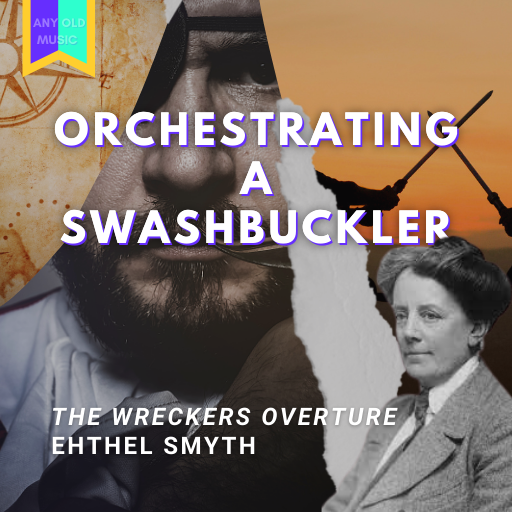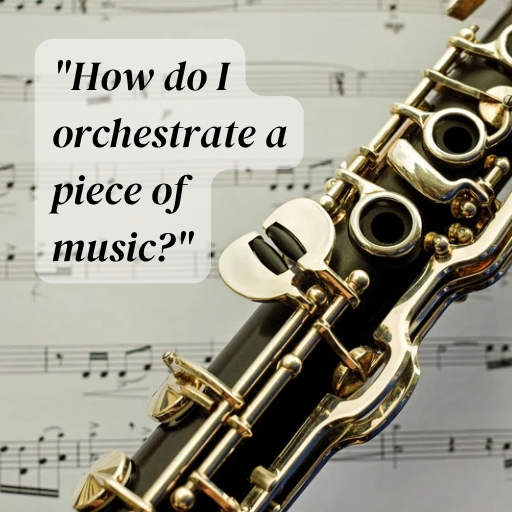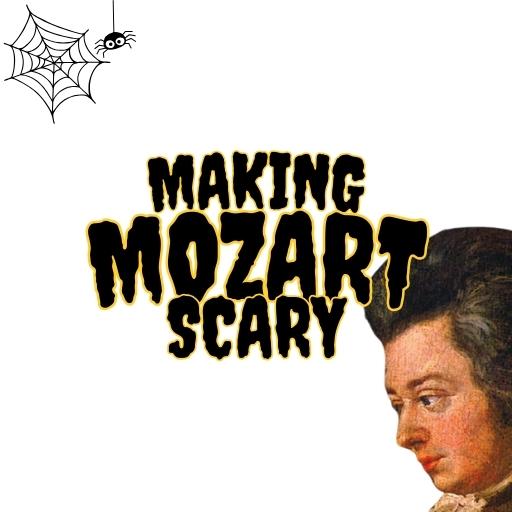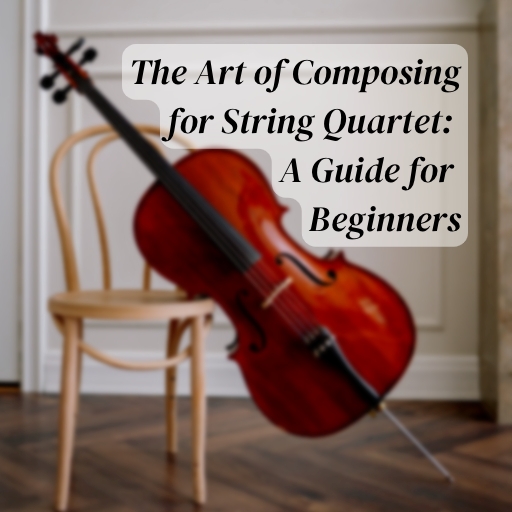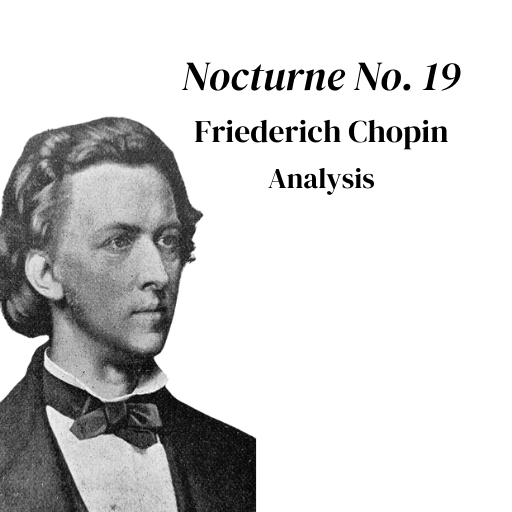Composed for the film The Day the Earth Stood Still (1951), Bernard Herrmann’s science-fiction score has a lot to teach us about composition and orchestration in the medium of film, media scoring and wider.
In this article today, therefore, I want to take a look at Herrmann’s score. I have done my best to be selective, to try my best to keep the article focussed. For this reason, I start by discussing Herrmann’s instrumentation choices, which are quirky but astonishingly beautiful because of this. I then demonstrate how he uses these instruments across the score, being concise with his choices. We will then look at a few cues in greater detail, such as “The Glowing” cue, which will facilitate a discussion on Herrmann’s use of effects and possible music editing in post-production. For the other two cues, “Gort’s rage” and “Klaatu”, we will take a closer look at Herrmann’s use of this ensemble and his orchestration technique.
Instrumentation
Overview
Herrmann’s instrumentation for the Day the Earth Stood Still is precise and novel. Listed below, we can see several quirks that imbue the instrumentation and, thus, the score, with a tremendous level of individuality.
7 Keyboardists (inc. Theremin) | 8 Brass |
2 Theremin 2 Hammond organs 1 Studio Organ 2 Pianos (1 dbl Celeste) | 1 Horn 3 Trumpets 2 Tubas 2 Contrabass Tubas |
c. 5 Percussionists | 6 Strings |
Vibraphones Chimes Cymbals Timpani Tam-Tams (S & L) Bass Drums (S & L) Wood blocks | 1 E. Guitar 2 Harp 1 E. Violin 1 E. Cello 1 E. Bass |
The first quirk of this ensemble is its omission of woodwinds and use of very few strings. Ordinarily, we would anticipate an orchestral film score of this time to boast a hearty string contingent and, often, woodwinds that supported those string instruments too. Instead, however, Herrmann uses only three electrically amplified string instruments and no woodwinds at all. It would seem, therefore, that Herrmann wants to defy orthodoxy and avoid the inherent warmness that acoustic string instruments can offer. Herrmann wants this score to be cold and darker.
The second quirk of this ensemble is its use of multiple keyboard instruments. For example, Herrmann has pairs of Hammond Organs and pianos, along with a single studio organ (I’ve linked a video here to the organ that I think it is). The use of these instruments gives the ensemble versatility in textural capacity, pitch range and timbre. For instance, keyboard instruments are polyphonic and boast a pitch range that extends to the depths of human hearing, up well above many soprano instruments in the standard orchestra. Moreover, the performer can change the timbre of organs by pulling out or pushing in various stops or drawbars, as they are called on Hammond Organs, along with other parameters such as the ADSR envelope (although models and historical developments will likely impact capabilities). (This is quite a cool video that goes through an array of different hammond organ sounds.)
Something that I will discuss more deeply in looking at some of the cues, Herrmann seems to have used doublings of keyboard instruments in two ways. One is to facilitate effects, which he does in the Gort cues, to create imposing dynamic swells. However, he also uses them to add depth via doubling. For example, in the same cues, Herrmann uses piano “a. 2”, meaning two pianos play the same line in unison. In a really deep register, using their very bottom note, Herrmann also asks them to keep their sustain pedal depressed through the cue.
This piano “a. 2” doubling leads us into my third observation of the ensemble: its emphasis on bass and contrabass register instruments. As I have mentioned, the keyboard instruments have a huge range. However, if we look at the other instruments in the brass and string families, the majority of instruments are bass or, what we might call, tenor instruments. In the brass group, for example, Herrmann uses three trumpets, three trombones and four tubas. Moreover, two of the tubas are larger contrabass versions of the instrument. With only the three trumpets comfortably occupying an alto and soprano register, Herrmann clearly wants bass.
https://www.youtube.com/watch?v=V0QZ7LVWDps&t=1s&ab_channel=AnyOldMusic Ethel Smyth’s The Wreckers is an opera set on the South West coast of Cornwall, in the United Kingdom. Perhaps indicative of an
Why this instrumentation?
With 27 instrumentalists, the ensemble is not huge, but it is not small either. Especially when one considers the lack of string orchestra that one would, ordinarily, expect to take up a large proportion of an orchestra of this size had it been present. Therefore, while budgets may well have played a role, as I imagined they did in his The Twilight Zone scores (“Walking Distance” – Orchestration Technique Article/Video; “Walking Distance” – Composition Technique Article/Video), I think it is much less of a factor here. Instead, I think the choices are simply Herrmann’s artistic inclination in this instance, in conjunction with the film. He seems to embrace the opportunity to devise and write for unorthodox ensembles.
Limiting myself primarily to the score, which I predominantly do for these articles, I can only speculate and, to an extent, empathise as a composer on why Herrmann did this. However, I imagine it was hugely rewarding and revealing as there would be a great deal of giving and taking. To some extent, he will have bent the ensemble to his will, making it do what he needed it to for the film. However, he will have needed to bend his composition technique and direction to suit the idiosyncrasies of the ensemble and the instruments within it too. In other words, Herrmann’s score will have been shaped by his engagement with the constraints and opportunities that this ensemble presents.
Beyond the purely creative constraint aspect, a hypothesis I do have regarding Herrmann’s instrument choices is that he selected them for their relevance to the dualities present in the main characters Klaatu, an alien-humanoid/human-alien, Patricia, a human, and the robot-alien Gort. Not something I can justify fully here, Herrmann’s instrumentation balances, blends and, at times, juxtaposes the human and the electronic. Or the traditional and the scientific. The decision to use electrically amplified strings, for instance, presents this duality. In one sense, we have the violin, a human-made instrument that is electronically augmented and modified. We also have the juxtaposition of the studio organ, which is more traditional in its use of (albeit electrically powered) bellows and reeds, against the hammond organs, which create sound via electromagnetism. Perhaps this was a dichotomy and thinking that Herrmann experienced when selecting and discussing his instrumentation with the film studios (20th Century Fox) music department directors Alfred and Lionel Newman.
Use (of instrumentation) through the film
It can be challenging to consider orchestration objectively across the entirety of a composition. In film scoring, however, the structure is inherently episodic, meaning the music is composed of enclosed or enclosable portions that may or may not relate to other “episodes”. This kind of structure presents a unique opportunity and method for analysing orchestration, showing us how Herrmann, in this instance, uses his orchestra across the entire film.
Rather than using the entire ensemble outlined in the previous section, Herrmann is just as selective and decisive in how he uses smaller sub-ensembles for different cues. For example, in the chart below, I break down the instrumentation of each cue. Doing this reveals just how selective Herrmann is and how he uses his ensemble across the range of the film. As we can see from the chart, Herrmann very rarely uses the entirety of the ensemble. For example, beyond “#2 Outer Space”, which omits the french horn and electric guitar, only “#10 Escape” and “#22 Panic”, which excludes the two harps and three percussionists as well, come close to using full forces. (I estimate five percussionists, based on how the scores are engraved and seem to be recorded.)
For the most part, Herrmann uses much less of the ensemble. For example, “#11 Solar Diamonds” uses only two vibraphones. “#15 The Flashlight” uses a quintet, while “#3 Radar”, “#12 Arlington”, “#13 Lincoln Memorial” and “#26 Alone” utilise a sextet of instruments. (“#12 Arlington” and “#13 Lincoln Memorial” emphasise a brass ensemble, using one hammond organ, the french horn, one trumpet and three trombones.) To put this further into perspective: half the cues––16––use less than half the available forces (13 players or less).
If you’re enjoying this article, why not sign up for our musical knowledge bombing list? (Find out more by clicking the link. Thank you.)
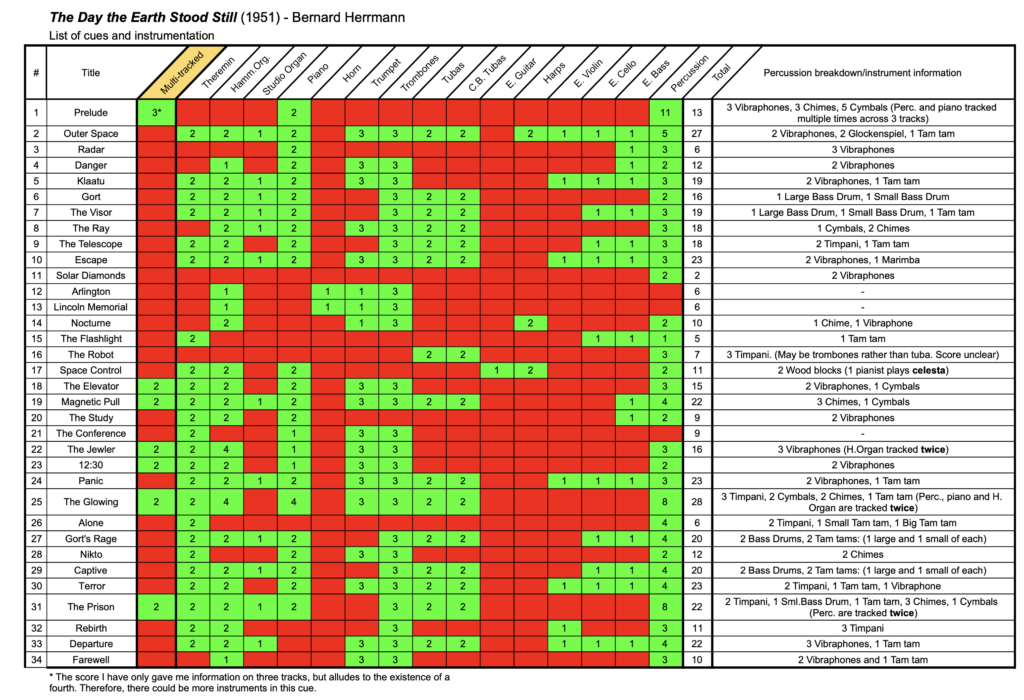
The “multi-tracked”/“two-part” cues: “Glowing (X & Y)”
If we look at the breakdown figure of each cue’s instrumentation again, we can see an additional column called “multi-tracking”. In this instance, multi-tracking is not what we might understand it to be today. (I use it here for lack of a better term.) Rather than a technique of layering individual recordings to create a single sounding performance of a composition, in this instance, it is two individual parts of the cue. In these two-part cues, there tends to be a cue that underscores the scene and a secondary cue that is used as a stinger. This stinger is superimposed and synchronised to the actions on screen more precisely and, possibly, laid over other cues too.
“The Glowing” (#25) cues provide the perfect example of these two-part, multitracked cues. Like the other multitracked cues, “The Glowing” has two parts, and Herrmann labels these parts “The Glowing X” and “The Glowing Y”. In all the multitracked cues, excluding the Prelude, he follows a similar labelling pattern. Cues labelled X, therefore, tend to be the more substantial parts of the cue that underscore scenes. Cues labelled Y, on the other hand, are often used as stingers. Taking this approach gives the stinger cues, particularly for “The Glowing”, greater utility allowing “The Glowing Y” to take on a unique role within the film itself.
Whether Herrmann intended the extended use of “The Glowing Y”, in composition, to other parts of the film, I cannot say. Either way, it is used beyond where the score suggests its intended use. It seems, therefore, that somewhere in post-production, the decision was made to use the cue in other parts of the film.
Almost becoming a leitmotif for Gort’s aggression, “The Glowing Y” is synchronised with the alien’s attacks on humans. For example, in the YouTube clip below, it is possible to see portions of the cue synchronised with the melting beam attacks made by Gort. Note also how “The Glowing Y” is dubbed into the film, not only to synchronise with Gort’s attacks but over cue #7 “The Visor” as well.

“Glowing Y”: effect, structure and recording technique
In the multi-tracked cues, the second stinger cues (usually labelled Y), Herrmann often provides details of the post-recording effects he intends for these cues. “The Glowing Y”, for instance, is broken into two further parts for recording. In the example below, we can see Herrmann instructs that bar 1 is to be “record[ed] separately” so that it can be “place[d] in backwards”. Whereas bars 2 to 6 are recorded and played naturally.
Splitting the cue into two parts provides the editors with multiple parts to dub into the film, providing options for variety and duration when synchronising. For example, in the scene linked above, there is a mixture of bar 1 being used alone, from “The Glowing Y” cue, and the use of the whole cue and bars 2 to 6. As a result, there is a great deal of flexibility to this cue and the techniques used, even when one considers the limitations of early recording and editing techniques and technologies. Cutting edge then, the technique has utility now.
Effects in The Day the Earth Stood Still
The reversing of cues is a primary effect that Herrmann uses in this score. Altering the timbre and, fundamentally, switching the roles of decay and attack the technique creates an unnatural sound. Naturally otherworldly then, it is the perfect technique to underscore a sci-fi film.
Another technique that Herrmann uses is similar, in a way. Delaying the point of recording, in the cue “The Elevator”, he instructs “only record [the] revibrations”. Effectively removing the attack, where a lot of timbral information lies, creates another unsettling and otherworldly feeling, as it is more difficult to identify the sounds themselves. Similarly to “The Glowing X” and “The Glowing Y”, the two “The Elevator” cues are superimposed over one another.
Orchestrating a piece of music is a rewarding process that requires a combination of creativity, technical expertise, and practical skills...
Orchestration
“Gort’s Rage”
Having to be selective, I have picked out two cues from The Day the Earth Stood Still to look at more closely. These are “Gort’s Rage” and “Klaatu”. Starting first with “Gort’s Rage”, there are several things I find exceptional about this cue, all of which contribute to its imposing and foreboding nature. To provide some brief context, however, Gort is an 8ft robotic alien who accompanies the humanoid alien, Klaatu, to earth. Essentially the muscle, to protect Klaatu, Gort is seemingly indestructible, very strong and sports a laser beam shooting visor that melts objects. The cue “Gort’s Rage” occurs shortly after “The Glowing Y” cue, approximately 1 hour and 19 minutes into the film. The character Klaatu is detained and badly injured, and Gort goes on a mission to free him while holding Patricia Neal captive. “Gort’s Rage” cues as Gort descends on Patricia in a quintessentially melodramatic scene.
The first of these foreboding features is the cue’s depth. It is significantly low pitched and remains largely constrained to the bass registers. For example, the two pianos play at the lowest extremity of their bass register, A0. Moreover, Herrmann utilises his bass-heavy ensemble, using his three trombones, two tubas and two contrabass tubas. He also uses the bass extremities of his keyboard and percussion instruments.
Natural, loud and low sounds are pretty rare in many of our lives and usually accompany something naturally significant and, possibly, disastrous. As a result, deep and booming sounds are inherently scary to us as they imply powerful forces in action. Think about earthquakes, for instance. Underscoring Gort by emphasising deep and powerful musical sounds tells the viewer that this character is scary.


The second foreboding feature lies in how Herrmann gives the cue a theatrical level of melodrama. Using a monophonic texture, excluding the low piano A0, means the music can be doubled, by many instruments, at the unison and octave. Recalling my undergraduate orchestration lectures, I can remember my tutor saying, “doubling at the unison equals intensity and doubling at the octave equals power”. Herrmann, using a monophonic texture and a large proportion of his available forces, invites the use of doublings at the unison and octave.
Linking to the second, the third aspect of this cue that I believe adds to its foreboding nature is how it swells. As if breathing, the music achieves a feeling of coming to life in two ways. One of these is through the dovetailing of parts that crescendo (green) and diminuendo (blue) as their phrases progress. (or, if you’re the Trombones, you’re given the responsibility of doing both. The second way is by momentarily adding weight to certain parts of the phrase (red), which is performed, notably, by the studio organ.


Unpicking the serenity of Pärt’s Spiegel I’m Spiegel: Tintinnabuli technique is recapped along with the identification of other creative constraints.
“Klaatu”
“Klaatu” is the other cue that I want to examine orchestrally here too. Klaatu is the film’s main character and is the humanoid alien who comes to earth to warn the human race about their path to destruction. Posing a threat to other life in the universe, Klaatu insists nuclear missile development must stop. Otherwise, there will be no choice but to destroy the earth before humans become a threat to others in the universe. The cue, “Klaatu”, appears early in the film, just before the 8-minute mark. It underscores the arrival of Klaatu as they emerge from their spaceship. The army and public have scrambled to its landing spot on a baseball field in Washington DC, surrounding it.
With foreboding elements, the cue is one of combined trepidation and curiosity. Herrmann, in this instance, explodes the pitch span of the cue but instructs all players, for which there is a large proportion, to perform their parts delicately. Spanning from D1 up to D8, the textural density is sparse, leaving plenty of space between the bass pedal and inverted pedal. The only filling in the middle of the texture is an Ab-major chord in the 2nd inversion.
It is in the juxtaposition of D and Ab that the trepidation lies. A tritone juxtaposition, the Ab also boasts soft and sharp dissonances against the pedal tone, in the form of Eb and C. However, the cue is not one of outright terror, like “Gort’s Rage”, but hesitant curiosity and uncertainty. Something that we observed in Herrmann’s The Twilight Zone score for the episode “Walking Distance”, the major tonality of the chord, albeit dissonant with the D-pedal, does not create a feeling of dread. In other words, the underscore implies that Klaatu, albeit alien, is not an immediate threat.


Looking at the orchestration of “Klaatu”, we can see there are several interesting doublings. On the inverted pedal, for instance, several instruments emphasise the electronic: the electric violin, theremin I, hammond organs, vibraphones and, then two octaves above these, the studio organ. The numbers provide a depth and intensity to the sound that is, counter-intuitively, heightened by the soft dynamic. Moreover, the doubling of theremin and electric violin is one that Herrmann uses throughout the soundtrack. Possibly due to their similar timbres.
Herrmann uses similar doublings on the low pedal, creating a uniformity of timbre between the two pedal types. Here he uses the hammond organs, studio organ, electric bass and cello and theremin II. These similar timbres flank the slightly different middle of the texture. Not so different as to stick out, the cup muted trumpets and trombones, along with the hammond organs, provide enough distinction to allow the chord to come through the texture with a degree of significance but also blend.
It is very possible, in orchestration, to soften dissonances by having harmonically dissonant material in different sections and timbres of the orchestra. Here Herrmann uses a largely homogenous set of doublings that punctuate the harmonic juxtaposition between the Ab-major chord and the D-pedal. An outer-worldly relationship, letting the audience hear these semantics clearly in the orchestration, communicates and strengthens the visual qualities of the scene and the narrative and genre of this film early on.
There is a lot to learn from Bernard Herrmann’s score from The Day the Earth Stood Still. Today we may well have just scratched the surface, but I think we have gleaned a lot for ourselves as composers and orchestrators. For example, we have learned that selecting unorthodox instruments and instrument combinations to create something aesthetically unique and aid creativity is an invaluable technique in our craft. We have advanced our understanding of orchestration and gained a snapshot of how we can structure cues to enhance editing and effects opportunities. If you would like me to do more analyses of this score, then please let me know by getting in touch.
If you’ve enjoyed this article, why not sign up for our musical knowledge bombing list? (Find out more by clicking the link. Thank you.)
Welcome to a journey into the heart of orchestration! In this exclusive video, composer and instructor George Marshall reveals the transformative process …
The Art of Composing for String Quartet: A Guide for Beginners String quartet music has been a favorite of composers and music …
Norman Del Mar’s engaging and informative writing provides unique insights into instrumentation and the lived experience of a knowledgeable conductor and horn …
Orchestrating a piece of music is a rewarding process that requires a combination of creativity, technical expertise, and practical skills...
A complete analysis of Nocturne No. 19, looking at form, structure, harmony and melody.
An impromptu analysis of the comedic melodies John Williams created to underscore the devious, Gilderoy Lockhart, in Harry Potter and the Chamber of Secrets.

